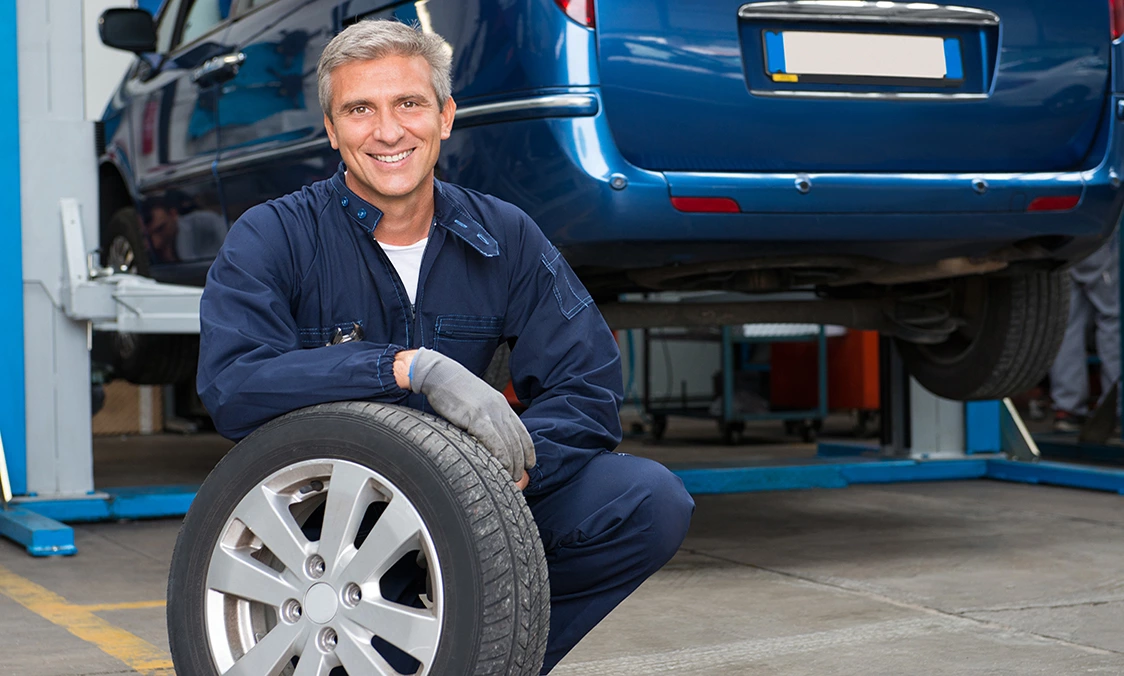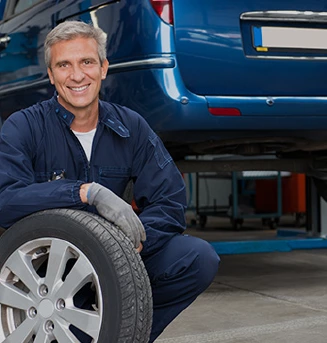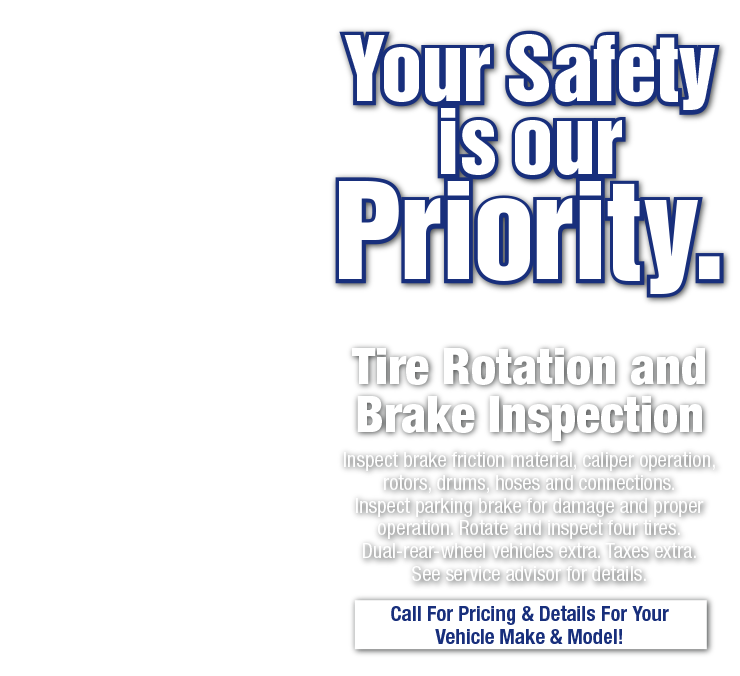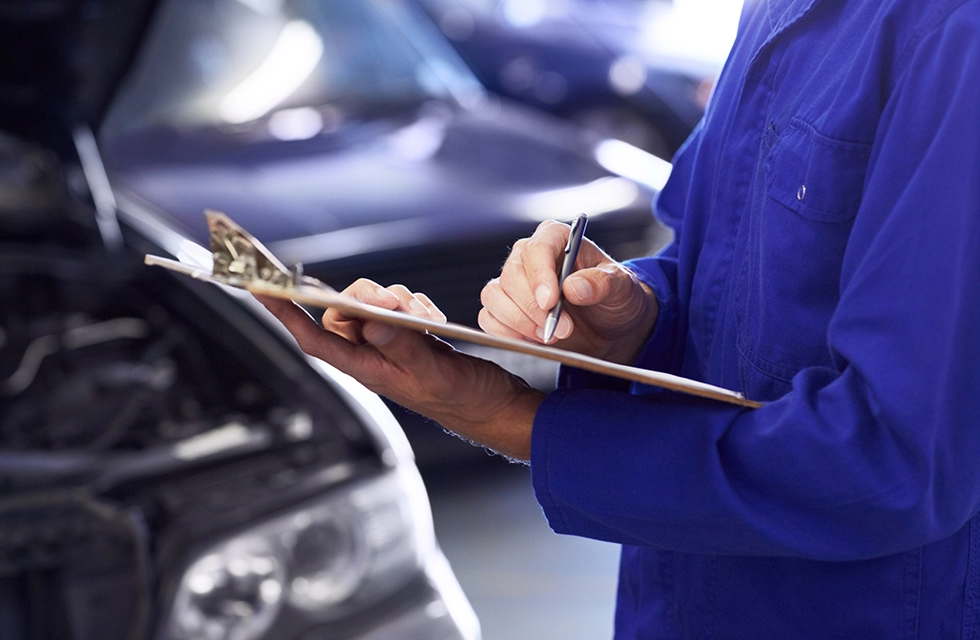Good automotive tires are one of the most critical
components in driving safety. New tires, properly inflated can make
the difference in an emergency. Proper wheel alignment, good tire
treads, regular tire rotation and high-quality tires all work together to
improve gas mileage, handling, braking and the overall safety of your
automobile.
Tire Services include:
- New Tire Selection
- Used Tires
- Flat Repair
- Wheel Alignment
- Wheel Balancing
- Nitrogen Inflation
- Tire Rotations
- Custom Wheel Selection
- Tires & Rim Cleaning
New Tire Purchases Receive:
-
Tire Mounting
Our trained experts will make sure
that your new tires are mounted safely.
Included in your service:
- Remove the old tires
- Mount and seal the new tires
- Inflate and balance each tire
-
Tire Disposal
We will handle the disposal of your old tires making sure that scrap tires are disposed of properly and with respect for our environment.
-
Valve Stems
Tire valves will be inspected and replacement recommended if any cracking appears. Rubber deteriorates over time and tire valves are not expected to
last beyond the life of two standard tires in normal
service. As a rule of thumb, the industry recommends replacing tire
valves whenever new tires are installed.
-
Computer Balancing
New tire installation includes balancing. Tires should be balanced each time they are mounted on a wheel, for example after installation of a new tire, or remounting a tire after a proper flat repair.
Properly balanced tires are important for driving comfort and long tire
life. As tires wear, the balancing characteristics may change leading to a vibration that develops over time. Tires should be re-balanced at the first sign of vibration or "shimmy". An unbalanced tire can cause vibration, resulting in driver
fatigue, premature tire wear and unnecessary wear to your vehicle's
suspension components.
-
Lifetime Rotations
New tire purchases include lifetime rotations.
Regular tire rotations help ensure a uniform tread wear on
all tires on your vehicle. Tire rotation is generally recommended every 6,000 to 8,000 miles. Refer to your Vehicle Owners Manual for
recommended rotation pattern and interval for your vehicle. If tires show uneven tread wear,
ask the service person to check and/or correct any alignment or other
mechanical problem before rotation. This is true for both front wheel
and rear wheel drive vehicles.
Full size spare tires should be included
in the rotation pattern for your vehicle. Compact spares (temporary use
spares) should not be included in the rotation pattern.
-
Lifetime Repairs
We’ll always be here for you when you need us with free flat repairs.
We’ll get you fixed up and back on the road as quickly as possible.
And Yes, Free of Charge!
-
Tire Inspections
New tires include free inspection by our trained personnel.
When you can't get to the shop and you need to do-it-yourself, try the "Penny Test". Grab your spare change
and follow these 3 easy steps:
- Take a penny and hold Abe's body between your thumb and forefinger.
- Select a point on your tire where tread appears the lowest and place Lincoln's head into one of the grooves.
- If any part of Abe Lincoln's head is covered by the tread, you're
driving with the legal and safe amount of tread. If the tread does not reach Abe's head (approximately 2/32 of an inch), your car's ability to grip
the road is greatly reduced. Contact us for assistance in replacing the worn tire.
Be sure to check the tread in several areas along the entire perimeter of the tire. Also visually inspect the sidewall, etc. for obvious wear or damage every month and again before long road trips.
-
Pressure Adjustments
Your new tire purchase includes tire pressure checks.
Tires lose up to 1 pound per square inch (PSI) every month. Checking your tire pressure monthly is a good way to ensure that tires are properly inflated. Properly inflated tires achieve better gas mileage and promote safety. Remember to check your spare tire as well.
For "Do-It-Yourself" tire pressure checks:
- Purchase a trusted tire pressure gauge.
- Check tire pressure when tires are cold.
- Insert pressure gauge into the valve stem on
your tire. The gauge will “pop” out and show the current tire pressure PSI.
- Compare the current PSI to the recommended PSI found on the
sticker inside the driver’s door of your vehicle or in the owner’s manual. DO NOT compare it the max PSI on your tire’s sidewall*.
- If the current PSI is higher than the recommended PSI number, let some air out of the tire until the numbers match. If the current PSI is less than the recommended PSI, add air until it
reaches the recommended PSI.
*The PSI number labeled on the tire is the
maximum allowed PSI (rather than the recommended PSI).
-
Reprogramming of the Tire Pressure Monitoring System (TPMS)
Your new tire purchase includes reprogramming of your Tire Pressure Mounting System (TPMS).
The TPMS monitors the air pressure in each tire. In the event of low tire pressure, an indicator light on the dashboard notifies the driver so that corrective actions can be taken.
-
Lifetime Road Hazard/Tire Protection
Our road hazard warranty covers a portion of the cost to
replace a tire unexpectedly damaged by road debris or potholes.
See service adviser in store for more details.










